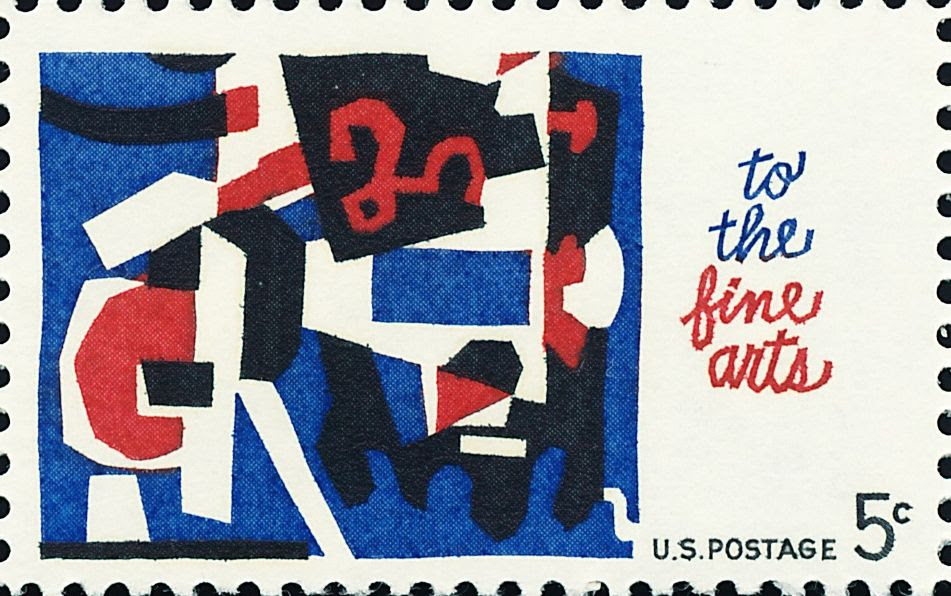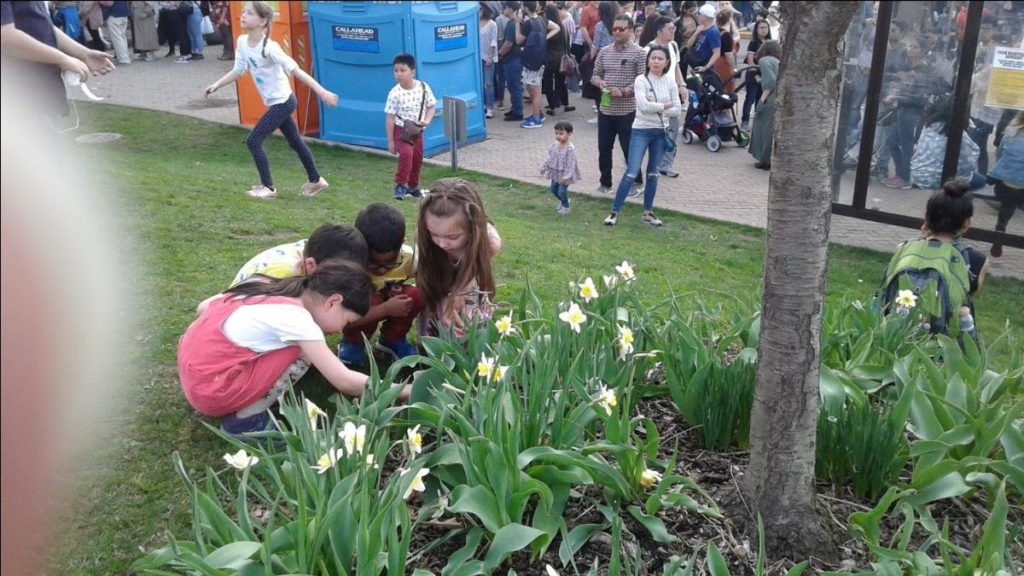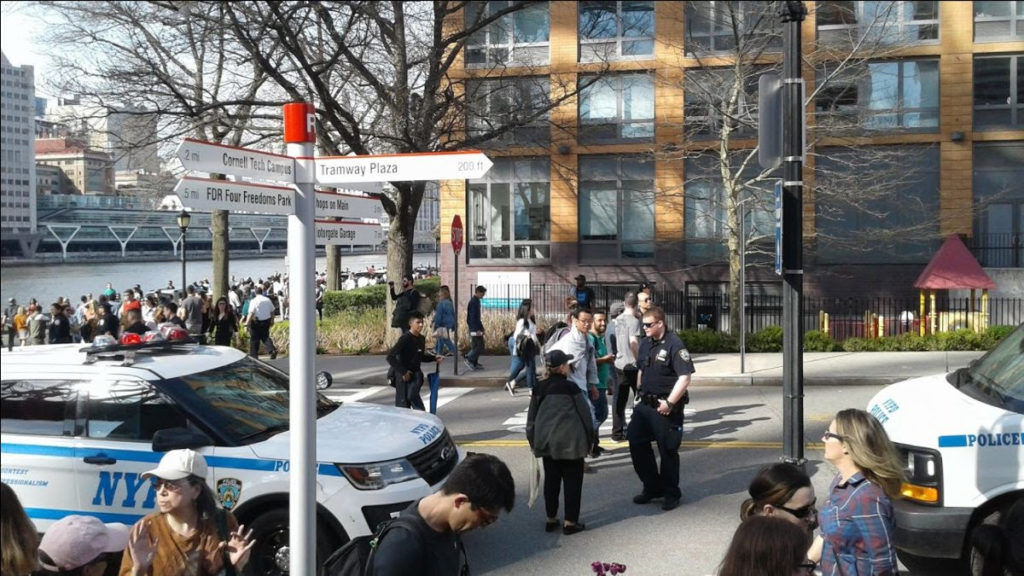THURSDAY, JULY 23, 2020 – STUART DAVIS MODERNIST


THURSDAY, JULY 23, 2020
The
112th Edition
From Our Archives
STUART DAVIS
MODERNIST

Stuart Davis Stuart Davis seated in front of Summer Landscape, Peter A. Juley & Son Collection, Smithsonian American Art Museum J0001440

Art + Artists Impression of the New York World’s Fair (mural study, Communications Building, World’s Fair, Flushing, New York)
Stuart Davis
From Wikipedia, the free encyclopedia
Davis, 1940 Born December 7, 1892 Philadelphia Died June 24, 1964 (aged 71) Nationality American Known for Painting, Modernism Movement American modernism Stuart Davis was an early American modernist painter. He was well known for his jazz-influenced, proto-pop art paintings of the 1940s and 1950s, bold, brash, and colorful, as well as his Ashcan School pictures in the early years of the 20th century. With the belief that his work could influence the sociopolitical environment of America,
Davis’ political message was apparent in all of his pieces from the most abstract to the clearest. Contrary to most modernist artists, Davis was aware of his political objectives and allegiances and did not waver in loyalty via artwork during the course of his career. By the 1930s, Davis was already a famous American painter, but that did not save him from feeling the negative effects of the Great Depression, which led to his being one of the first artists to apply for the Federal Art Project. Under the project, Davis created some seemingly Marxist works; however, he was too independent to fully support Marxist ideals and philosophies. Despite several works that appear to reflect the class struggle, Davis’ roots in American optimism is apparent throughout his lifetime.

Life and career
Stuart Davis was born on December 7, 1892, in Philadelphia to Edward Wyatt Davis, art editor of The Philadelphia Press, and Helen Stuart Davis, sculptor.
Starting in 1909, Davis began his formal art training under Robert Henri, the leader of the Ashcan School, at the Robert Henri School of Art in New York under 1912.During this time, Davis befriended painters John Sloan, Glenn Coleman and Henry Glintenkamp. In 1913, Davis was one of the youngest painters to exhibit in the Armory Show, where he displayed five watercolor paintings in the Ashcan school style.[ In the show, Davis was exposed to the works of a number of artists including Vincent van Gogh, Henri Matisse, and Pablo Picasso.
Davis became a committed “modern” artist and a major exponent of cubism and modernism in America. He spent summers painting in Gloucester, Massachusetts, and made painting trips to Havana in 1918 and New Mexico in 1923. After spending several years emulating artists in the Armory Show, Davis started moving toward a signature style with his 1919 Self-Portrait, in the collection of the Amon Carter Museum of American Art
.In the 1920s he began his development into his mature style; painting abstract still lifes and landscapes. His use of contemporary subject matter such as cigarette packages and spark plug advertisements suggests a proto-pop art element to his work. Among Davis’ practices was his use of previous paintings. Elements of harbor scenes he painted in Gloucester, Massachusetts can be found in a number of subsequent works. Another practice was painting series, works with similar structures, but with altered colors or added geometric embellishments, essentially creating variations on a theme.
Some commentators suggest that this aspect of his work parallels his love of jazz in which a basic chord structure is improvised upon by the musicians. In 1928, he visited Paris, France for a year, where he painted street scenes. In 1929, while in Paris, he married his American girlfriend, Bessie Chosak. In the 1930s, he became increasingly politically engaged; according to Cécile Whiting, Davis’ goal was to “reconcile abstract art with Marxism and modern industrial society”.
In 1934 he joined the Artists’ Union; he was later elected its President.In 1936 the American Artists’ Congress elected him National Secretary. He painted murals for Federal Art Project of the Works Progress Administration that are influenced by his love of jazz. US postage stamp of 1964 featuring ‘Detail Study for Cliche’ by Stuart Davis In 1932 Davis was devastated by the loss of his wife, Bessie Chosak Davis who died after complications from a botched abortion.[
Also in 1932 Davis executed a mural commission for Radio City Music Hall which the Rockefeller Center Art Committee named “Men Without Women” (after Ernest Hemingway’s second collection of short stories completed the same year). According to Hilton Kramer in a 1975 piece on the work in the New York Times the artist was happy neither with the location in which the mural was placed or the title it was given[In 1938 Davis married Roselle Springer and spent his late life teaching at the New York School for Social Research and at Yale University In 1947–52, two works by Stuart Davis, For internal use only (1945) and Composition (1863) (c. 1930) were featured in the Painting toward architecture crossover art and design exhibition, in 28 venues He was represented by Edith Gregor Halpert at the Downtown Gallery in New York City. One of his last paintings, Blips and Ifs, created between 1963 and 1964, is in the collection of the Amon Carter Museum of American Art. The US Post Office in 1964 issued a stamp featuring ‘Detail Study for Cliche’ by Davis. Davis died of a stroke in New York on June 24, 1964, aged 71.

Stuart Davis, Newark, 1910, oil on wood, Smithsonian American Art Museum, Gift of Nathaly Baum, 1974.73

Stuart Davis, Babe La Tour, 1912-1913, watercolor and pencil on paper, Smithsonian American Art Museum, Gift of Henry H. Ploch, 1983.84

Stuart Davis, Rue de l’Echaude, 1929, lithograph and chine-colle on paper, Smithsonian American Art Museum, Museum purchase, 1969.87

Stuart Davis, Shapes of Landscape Space (Landscape Space No. 4), 1939, lithograph on wove paper, Smithsonian American Art Museum, Transfer from the D.C. Public Library, 2018.5.1
Style
Davis’ interactions with European modernist works in 1913 had a significant impact on his growth as an artist. The realist Robert Henri had trained Davis to paint in a realist fashion since Davis’ youth, however Davis’ excursion with European modernists caused him to raise the modernist flag instead. Stuart Davis did not switch to modernism out of spite for Henri, but rather out of appreciation for the many forms of art that exist.
The love and adoption of European modernism morphed into political and social isolationism that was a staple of American in the 1920s and 1930s. Davis never joined an art group during the 1920s and became the sole author of Cubism which used abstract colors and shapes to show various dynamics of the American cultural and political environment.
From 1915 to 1919, Davis spent summers in Massachusetts where his art work had intense color palettes paired with simple designs, trademarks of several artists that Davis admired at the Armory Show.[2] The early 1920s saw many American artists abandon modern art, but Davis continued to try to discover ways to implement his knowledge of shapes and colors into his art work.
By the end of the 1920s, Davis had done more work and research into Cubism and its various levels of sophistication than any other American artist at the time.[2] During the 1930s and 1940s, Davis attempted to make is work with Cubism altered and more original. While working on several murals for the Federal Art Project, Davis tried to find alternatives to traditional Cubist structure. The emergence of Abstract Expressionism in the 1940s made some question whether Davis was still the greatest modernist in the country; however, this test did not shake his resolve as he continued to develop his own painting style.

Stuart Davis, Ives-Sillman, Composition, from the portfolio Ten Works x Ten Painters, 1964, screenprint on paper, Smithsonian American Art Museum, Museum purchase, 1965.37.2F, © 1964, Wadsworth Atheneum

Stuart Davis, Harbor Landscape (Funnel and Smoke), 1939, lithograph on paper, Smithsonian American Art Museum, Gift of Mrs. Stuart Davis, 1969.175

Stuart Davis, Int’l Surface No. 1, 1960, oil on canvas, Smithsonian American Art Museum, Gift of S.C. Johnson & Son, Inc., 1969.47.55
Inspirations
Davis was born during the Progressive Era, a time when America had a growing sense of optimism about itself as a nation through its technologies and management in the material and social realm. Through this, Davis had a great sense of pride in being American and led to him creating several works centered on a “Great America”.
After his training from Henri, Davis would walk around the streets of New York City for inspiration for his works. His time amongst the public caused him to develop a strong social conscience which was strengthened through his friendship with John Sloan, another anti-institutional artist. Additionally, Davis frequented the 1913 Armory Show (in which he exhibited his work), to further educate himself on modernism and its evolving trends. Davis acquired an appreciation and knowledge on how to implement the formal and color advancements of European modernism, something Henri did not focus on, to his art.
In 1925, the Société Anonyme put on an exhibit in New York with several pieces by the French artist Fernand Léger. Davis had a large amount of respect for Léger because like Davis, Léger sought the utmost formal clarity in his work. Davis also appreciated Léger’s work for the subject matter: storefronts, billboard and other man-made objects. In the early 1930s after returning from a trip to Europe to visit several art studios, Davis was re-energized in his identity in his specific work. Previously, he saw Europe as a place bursting at the seams with talented artists, but now he felt as if he was of the same caliber if not greater than his European counterparts. According to Davis, his trip “allowed me to observe the enormous vitality of the American atmosphere as compared to Europe and made me regard the necessity of working in New York as a positive advantage.”


Stuart Davis, Pennsylvania, from the United States Series, 1946, gouache and pencil on paperboard, Smithsonian American Art Museum, Gift of Container Corporation of America, 1984.124.81
THURSDAY PHOTO OF THE DAY
Send your entry to rooseveltislandhistory@gmail.com
Win a trinket from the RIHS Visitor Center


WEDNESDAY PHOTO OF THE DAY
Who can remember April 14, 2019 when over 20,000 visitors
came to see the cherry trees?
Alexis Villafane and Joan Brooks are the winners

JUST A REMINDER OF THE CHERRY BLOSSOM CROWDS LAST YEAR……………….
EDITORIAL
Instead of getting on an Amtrak train and off to the Smithsonian, I am looking at the vast collection of the American Art Museum. This is a great way to see all the art by one artist that is surely not on exhibit at one time.
To see all the collection go to:
https://americanart.si.edu/artist/stuart-davis-1151
Judith Berdy
Text by Judith Berdy
Thanks to Bobbie Slonevsky for her dedication to Blackwell’s Almanac and the RIHS
Thanks to Deborah Dorff for maintaining our website
Edited by Melanie Colter and Deborah Dorff
All image are copyrighted (c)
Roosevelt Island Historical Society
WIKIPEDIA (C)
SMITHSONIAN INSTITUTION
FUNDING PROVIDED BY ROOSEVELT ISLAND OPERATING CORPORATION PUBLIC PURPOSE GRANTS
CITY COUNCIL REPRESENTATIVE BEN KALLOS DISCRETIONARY FUNDING THRU DYCD


Copyright © 2020 Roosevelt Island Historical Society, All rights reserved.Our mailing address is:
rooseveltislandhistory@gmail.com



Leave a comment